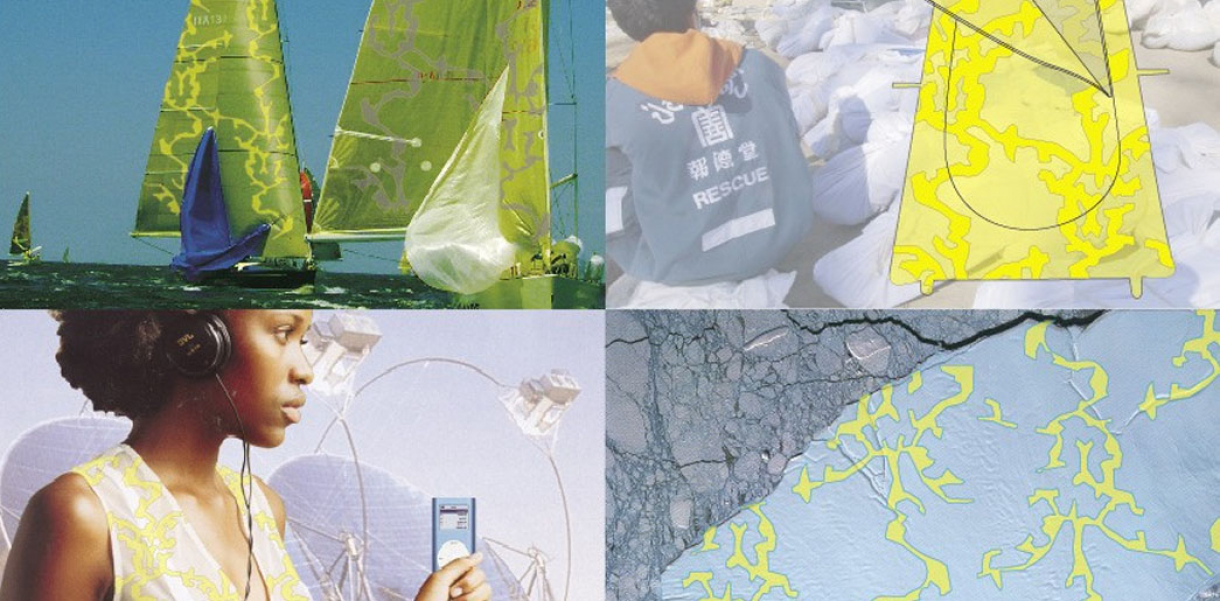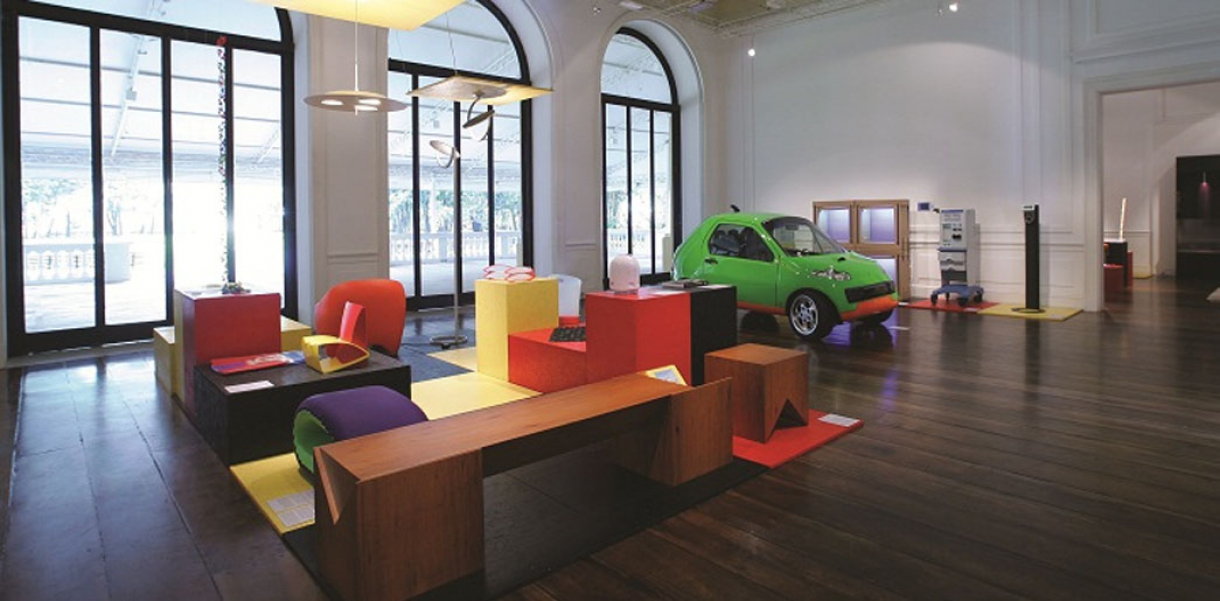Functionality and use of design
The textile is based on solar cell-technology creating renewable energy. Being in a position of this flexible and lightweight Energy-Cloth you will always be self-sufficient creating your own ’Mobile-Electricity’. This intelligent textile generates a great potential in widespread areas such as; Nomad-Cultures, medical treatment, body bags or even covering of whole landscape-areas.
How did this design improve life?
Renewable Energy This project is based on renewable energy with the prospect of sustainable design. We have invented a product exploiting the earth's most important and non-polluting energy source: sunlight.
As designers, we see it as our mission to participate in the debate concerning the consumption of resources. Risø National Laboratory invests an important amount of work concerning solar cell technology and we asked them to participate in some research on Solar Cells integrated into textiles. By research and through a huge number of experiments we have succeeded in a realization what seems to be our vision of a futuristic material. As designers we discovered a huge potential in the idea of a portable and flexible textile, converting sunlight into useable electricity. With this very new material as a major achievement, we are in the process of getting hold of a patent.
Integrating Solar Cells into textile
The traditional Solar Cells used for buildings are produced with a very stereotype and rigid geometry. To emphasize the solar cell as an integrated part of the textile we have made it possible to create very detailed and organic patterns.
The solar cell is incorporated in a lightweight and transparent organic textile and can be manufactured using industrial techniques such as silkscreen printing. The textile is now printed in smaller pieces (30x45cm).
’A Building-Structure’
By putting the textile-modules together you can easily reach both the size and the exact form you need. Regarding the pieces as building blocks, we have created a ’building-system’ reaching subject areas from body to landscape.
With a very thin copper-thread, you will sew the pieces together creating all forms and shapes. Imitating the textile way of sewing the different parts together we have invented a technique which allows the necessary electrical connection simply by sewing the cloth together with a thin copper thread.
In the near future we could imagine the textile being produced in running meters.
Establishing Energy
Being independent of conventional electricity, this would enrich us with the freedom to settle down anywhere on Earth. With this Solar Textile you would be self-sufficient and able to generate your own electricity immediately and at very low costs.
Mobile Energy
The textile is highly efficient but lightweight, described as; minimum material, maximum performance. With this invention you will easily carry the energy with you in the shape of a jacket or as a tent. You will be generating electricity in remote locations where conventional energy is not available, e.g. at sea, in the desert of Sahara or in developing countries.
There is a huge potential in the 3.World, where people live in primitive ways, suffering from extreme weather and hostile environments, only sheltered by simple textile constructions. In desert areas Nomades move from place to place carrying all their belongings with them. This lightweight textile is easily carried around and can be generating electricity anywhere for household.
Climatic Membrane
Reading this textile as an intelligent membrane we would be enriched with another kind of skin, able to protect and support body conditions and improve life in different kinds of situations. The textile would, for example, be able to interact with the surroundings, just like the chameleon reacting to its environments. Climatic sheltering in different scales enables us to improve functioning in everyday life as well as in extreme situations. This consideration is an example of one of our statements called ’Energy-Scape’
’Energy-Scapes’
This concept could be integrated in all design aspects at all levels where textiles are used. From smaller items as clothing, furnishing, inflatable items to tents, sails, greenhouses and large membranes covering public spaces or even whole landscape areas. In a future scenario replacing ’building-skins’ with Solar Cell membrane could prove huge and interesting progress.
Reading all levels as active and self-sufficient ’Energy-Scapes’, we have introduced a design that allows whole new perspectives into well-known objects used in both everyday life and in extreme situations.
We imagine the material widely used; for active sports, outdoor, clothing for elderly, healthcare clothing and work wear. Thinking ’intelligent camouflage’ police and military uniforms as well as ’intelligent hospital clothing’ displaying your immediate body conditions. In extreme situations and catastrophes, an emergency hospital could easily be installed anywhere, supplying electricity for most important hospital gear, as well as body bags being able to chill down dead bodies immediately to prevent decomposing and derived infections.
In a larger scale, we imagine the Solar Textile covering unexploited areas as coastlines or impracticable areas creating energy for whole communities or even islands.
Synthesis
This project reaches different levels considering/depending on various standards of living around the World. It reaches both basic necessities as well as electronic devices. It takes an innovative position from the body to landscape, conventional to the extreme, high-tech to low-tech. With a broad human and public relevance it generates a new age of textile and sets tempting standards for products and life forms to come.
The Energy Cloth has the potential of challenging the conventional use of textile and membranes. The foundation of our philosophy is to work on the premises existing all over the World. Common for this innovative concept is to provide people with the possibility of improving their life depending on their personal needs.
Drawbacks of life improvement
None.
Research and need
As designers, we see it as our mission to participate in the debate concerning the consumption of resources. We seek to change the traditional way of regarding ecology. We as clothing designers want to open up the conception of ecology to expand from simple clothing to greater aspects and strategies. From the traditional ecological cotton, we want to bring new perspectives into the field of ecological textiles. By integrating Solar Cell technology we seek to realize the idea of an active and intelligent textile exploiting the sunlight as a non-polluting energy source. At this point in our process, we needed some specific expert knowledge and we decided to contact Risø National Laboratory processing the necessary expertise on this topic. Supported by scientists we were provided with the knowledge to help us carry out our ideas.
Working with scientists we have discovered a huge potential in exchanging know-how designer versus scientist. As designers we are trend-spotters, creating ideas and setting new standards for the future, whereas the scientist has the specific knowledge. We as designers should exploit and challenge this accessible expertise, to create new design achievements. We believe it is our duty to fulfil this role as designers if we want to bring the design to a higher level.
Designed by
Tine Hertz, Maria Langberg, Frederik Krebs, Bjørn Winther-Jensen, Jan Alstrup, Holger Spanggard, Matteo Biancardo - Denmark






